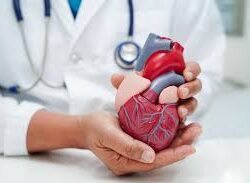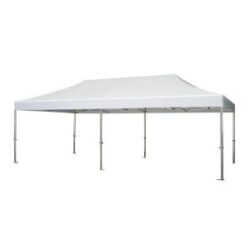Every car carries a story. From the first ignition to the final stop, vehicles reflect the lifestyle, choices, and culture of their time. When a car reaches the end of its life, it often ends up in a scrapyard. But behind those piles of metal in Sydney’s scrapyards lies more than just discarded machines. They tell stories about how society, technology, and the environment have evolved over the years. These scrapyards serve as a living record of change, capturing the transition from one generation of vehicles to another. Visit Website
A Glimpse into the Past Through Metal and Machines
Walking through a scrapyard in Sydney is like stepping into a time capsule. Each rusted car once represented pride, progress, or adventure for its owner. Old Holdens, Fords, and Toyotas often lie beside newer models, showing the shift in what people value in vehicles.
In the 1970s and 1980s, Australian-made cars dominated the roads. They were built for strength and endurance. Today, imported models have taken over, focusing on lighter materials and fuel-saving engines. The scrapyards capture this change perfectly — a mix of steel giants from the past and compact, tech-filled cars from the present.
Technology and the Evolution of the Engine
Engines have always been at the heart of automotive progress. The scrapyards in Sydney hold engines from every era, each representing a step forward in technology. Older engines were large, heavy, and mechanically simple. They required frequent maintenance and consumed more fuel.
Modern engines, on the other hand, are smaller and more refined, using advanced materials that produce less pollution and more power. Electric and hybrid engines are now joining the pile, marking a new phase in motoring history. Their presence in scrapyards highlights the global shift towards greener technology and cleaner energy.
Interestingly, statistics show that Australia’s automotive recycling industry processes over 500,000 end-of-life vehicles every year, with many engines being reused or recycled. This demonstrates not only a shift in technology but also a growing awareness about resource conservation.
Scrapyards as a Reflection of Changing Lifestyles
Cars have always been more than machines. They represent freedom, identity, and social change. In Sydney, the evolution of vehicles reflects how people’s needs and habits have transformed over time.
Decades ago, large family cars ruled the roads because families travelled together, and fuel was affordable. As urban life grew busier, smaller and more economical cars became popular. Today, many people prefer hybrids and compact models to match city living and environmental awareness.
Scrapyards tell this story clearly. The presence of once-beloved family sedans now replaced by efficient hatchbacks or electric cars mirrors society’s shift in priorities — from power and size to sustainability and practicality.
The Environmental Story Hidden in the Scrap
Sydney’s scrapyards also play a major role in the city’s environmental efforts. Car recycling reduces the amount of waste that ends up in landfills and prevents toxic materials from entering the soil or water. When a car is dismantled, around 85 to 90 per cent of its materials, including metals, glass, and plastics, are recycled.
This process supports Australia’s environmental goals and helps conserve natural resources. Every tonne of recycled steel saves around 1,100 kilograms of iron ore, 630 kilograms of coal, and 55 kilograms of limestone. These figures show how scrapyards are not just places of disposal but centres of sustainability.
While some may view them as graveyards for cars, they are actually hubs of renewal where old materials gain a new life.
People Behind the Scrap: The Human Element
Every scrapyard has workers who understand the language of old engines and worn-out parts. Their job is to identify what can be salvaged, reused, or recycled. Many of these workers have years of experience and can identify the make and model of a vehicle just by its frame or engine sound.
Their work connects the past and present. When they restore a part from a vintage car or recycle a modern engine, they contribute to preserving both automotive history and environmental health. These workers often say that scrapyards are full of memories, and every car holds a story of someone’s life, journey, or dream.
From Junk to Revival: The Circle of Renewal
The story does not end when a car is scrapped. Many parts go on to serve again in other vehicles or industries. Steel from old cars is melted and reshaped into construction materials or used in manufacturing new cars. Tyres are recycled into playground flooring, while batteries are repurposed or safely processed.
This process shows how nothing truly goes to waste. The cycle of recycling transforms what was once abandoned into something valuable once more. It also encourages car owners to see the importance of responsible disposal, especially when selling their old vehicles through a used car buyer Sydney, who often helps direct cars to recycling yards for further processing.
A Mirror of Modern Change
Scrapyards today look very different from what they were decades ago. With the rise of electric cars, advanced materials, and changing fuel technologies, scrapyards have had to adapt. They now manage components that require special handling, such as lithium batteries and electronic chips.
This adaptation reflects a broader change in society — a movement towards sustainable living and circular economy practices. It shows how even the end of a vehicle’s life can contribute to a cleaner and more balanced environment.
Conclusion
Sydney’s scrapyards are silent storytellers. They remind us of where we came from, how far technology has progressed, and how society continues to evolve. Each rusted shell or broken engine marks a chapter in Australia’s automotive journey — from the powerful petrol engines of the past to the electric motors shaping the future.
Behind the piles of scrap metal lies a story of progress, responsibility, and renewal. These places prove that endings can lead to beginnings, and that even old engines can inspire new stories. Sydney’s scrapyards are more than just mechanical graveyards; they are living museums of change, constantly reminding us that transformation often begins with what we choose to leave behind.




